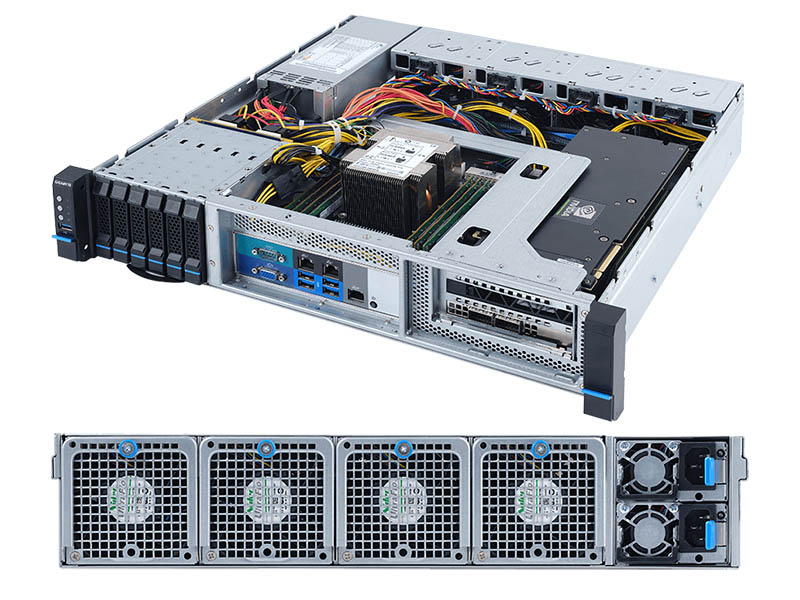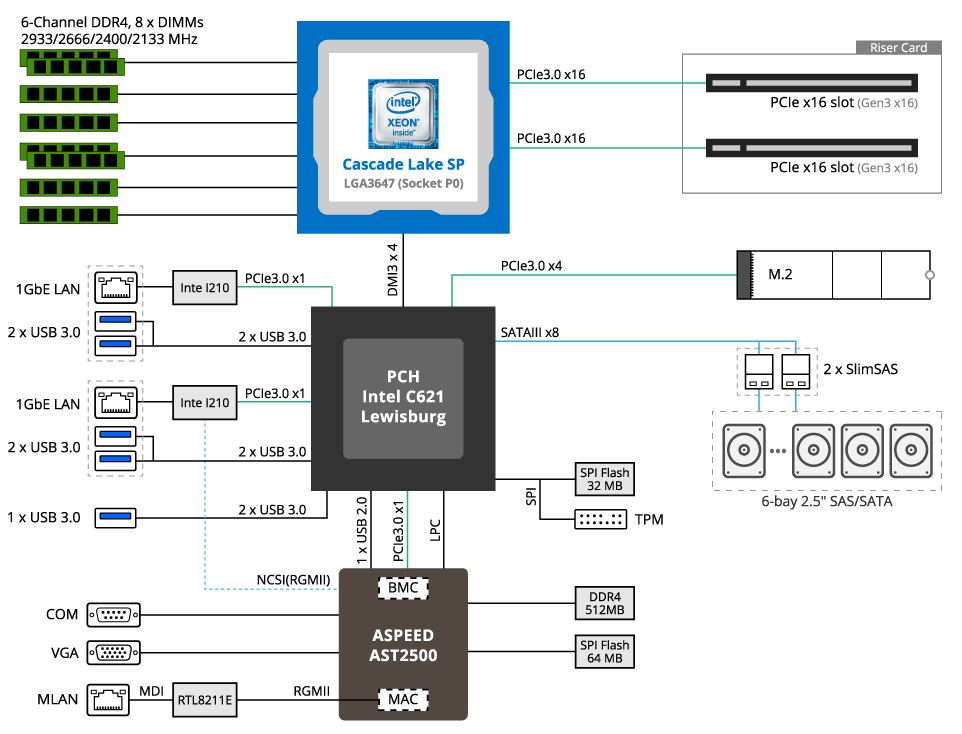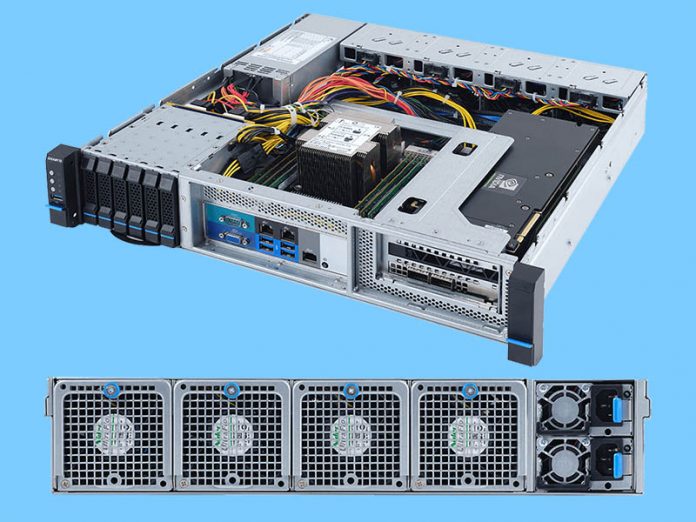The edge server space is heating up. That is probably an understatement, but it also begs to define what an “edge server” is. In this case, the Gigabyte E251-U70 is a short-depth 2U server designed for retail and telecom racks. Gigabyte sees the potential so the “E” stands for edge and this is said to be the first in their new line of edge series products.
Gigabyte E251-U70 Overview
One of the biggest features of the Gigabyte E251-U70 is its size. It is a 2U chassis, but one with a very short depth. The server measures 439 x 86 x 449mm (WxHxD) and that 449mm translates to under 17.7″.

All of the I/O is at the front of the chassis which is important for racks without rear access. There are six 2.5″ hot-swap bays, dual 1GbE LAN (Intel i210), a management LAN, and traditional USB/ legacy ports for I/O all facing the front of the unit. Another important aspect is that the riser-based PCIe slots also have I/O facing that direction which can be important for adding anything from GPUs to network cards in the system.

The solution is built around a single Intel Xeon Scalable platform. Most will use a Cascade Lake-SP solution here. We have heard that this is a segment that Intel is pushing its U-series of single-socket only processors to keep costs lower in these systems. There are a number of dual-socket offerings in this space which offer more density, but cannot use those U-series CPUs. Gigabyte says that the server can scale up to 205W TDP CPUs and also support GPUs like the NVIDIA T4.
On the rear of this system you can see four sets of swappable fans along with redundant power supplies. One of the major areas of conflicting requirements in this space is actually where the power supplies are located. If the power supplies are at the front of the chassis, it means all cables are located on the front panel which is excellent for many deployments. The drawback to those designs is that you lose storage capacity since the PSUs replace 2.5″ drive bays and the rear adds another fan module. Gigabyte’s solution put the PSUs at the rear to maximize expandability, but it does mean that this unit is cabled on both sides.
Final Words
This is certainly a different take on what an edge server should look like. Many of the designs we have seen thus far instead use Xeon D/ Atom processors, or dual-socket Xeon designs. STH has been regularly reviewing servers in this space since 2013 and we are going to expand coverage to the new breed of higher-performance edge servers very soon. Expect more reviews and coverage in the edge server market over the next few quarters.





Which way does the air flow through the GPUs?
“All of the I/O is at the front of the chassis which is important for racks without rear access.”
.
.
.
“On the rear of this system you can see four sets of swappable fans along with redundant power supplies.”
So how do you change the fans/power supplies if you don’t have access to the rear of the rack? This probably could’ve been worded better.
Evan Richardson
use rack mount slider that allow you to access the back of the server – helps that is a short depth. Not rocket science.
IMHO while fan swapping can be done within limited space, that psu seems way too huge. It might be better if psu is at the front.